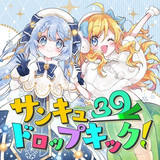Maybe It’ll Get Better in the Middle?

As someone who’s not too well-acquainted with the reincarnation genre, I started watching The Beginning After the End unsure of my expectations for the story. After viewing the first two episodes, I am just as unsure as I was at the start. The show introduces an interesting world full of magical dangers and adages on human connections, but although I enjoyed the antics of a once-mighty king trapped in a toddler’s overpowered body, I found myself losing interest in the plot in places where the animation didn’t supplement it.
Based on the hit webcomic by TurtleMe, The Beginning After the End introduces King Grey, who, after mysteriously falling to his untimely death, is reincarnated as a baby named Arthur Leywin on the continent of Dicathen. Still retaining the memories of his past life, Arthur grows up in the care of his new parents, Alice and Reynolds, and through observing them he learns that humans in this world can possess magic powers, or mana. With the knowledge of his previous self’s powers and the help of his parents’ old party, the Twinhorns, Arthur makes it his mission to awaken and master control over his mana.

A lot of fans seemed to be disappointed after seeing the art direction of the anime when the trailers were released, but after watching the first two episodes, I personally found the simpler character design and backgrounds to possess their own charm. It felt reminiscent of anime from the early 2010s, and this slightly older feel added a sense of nostalgic comfort. Arthur’s giant blue orbs for eyes did take some getting used to, but I eventually found the overall design of Arthur quite cute, even humorous when paired with the low, matter-of-fact narration from King Grey inside of him. Though the art style does stray from the more ethereal rendering of the comic’s recent volumes, it actually seems to emulate the style of the comic’s initial chapters quite well, remaining faithful to the source material.
The complaints about the animation that I do agree with, however, are the ones about the lack of movement. Several of the scenes are just a string of tableaux rather than actually animated scenes, which doesn’t work for a story that involves a plethora of magic and combat. This isn’t to say that there aren’t any scenes with smooth animation — in fact, there are a few scenes that are executed quite well. I really enjoyed the fiery displays of Reynolds harnessing his mana to move the earth, and the cosmic supernova Arthur materialized while activating his mana that blew up his house in the process. In the places where pieces were physically moving across the screen, the art complemented the magic of the plotline.
There were a handful of moments where the animation could have added a hint more of this liveliness. For example, in the scene where Arthur went into town with Alice and gaped at a man parading his fire-like mana around, the flames could have flickered as they wrapped around them, dancing through the air like a flowing kite, rather than relying on another static Ken Burns transition. When Arthur’s family and the Twinhorns get attacked by bandits in episode 2, perhaps we could’ve seen the arrows whoosh through the air and lodge themselves deep in the enemies’ flesh, rather than seeing only the frames of before and after the arrows were shot. These small movements would’ve elevated the anime in leaps and bounds, and without them, even the most intense parts of the plot fell flat.

Despite these pitfalls, the story itself has an interesting premise, especially in its mysteries about the different types of mana and King Grey’s past. I found myself particularly intrigued by the premise that Grey is a king from a futuristic society and not a medieval era. Many of his memories show a dull world filled with floating blimps and desolate roads, and the beginning of episode 2 shows that his past attendants were thin, cyclopean robots. Despite these technological advancements, Grey is shown using a sword to commit his heinous acts of violence. It piqued my curiosity and made me wonder whether this ultra-technological, dystopian kingdom of his would ever be explored in Arthur’s timeline.
These explorations of Grey’s journey, as well as the ominous appearance of a red-eyed beast at the end of both episodes 1 and 2, hint at a larger conflict that is sure to develop in an interesting direction. But have all of these plot points and animation choices in combination hooked me enough that I’ll remember to tune in for next week’s episode? That, I’m not so sure about.
Because I know there is a dedicated audience for TurtleMe’s original work, I hope this adaptation recognizes its strong points and hones them further in its remaining episodes. So far, it’s not there yet — but maybe it’s a case of playing the long game.
The Beginning After the End is now streaming on Crunchyroll.
If you liked the article, do not forget to share it with your friends. Follow us on Google News too, click on the star and choose us from your favorites.
If you want to read more anime-manga articles, you can visit our anime-manga category.



